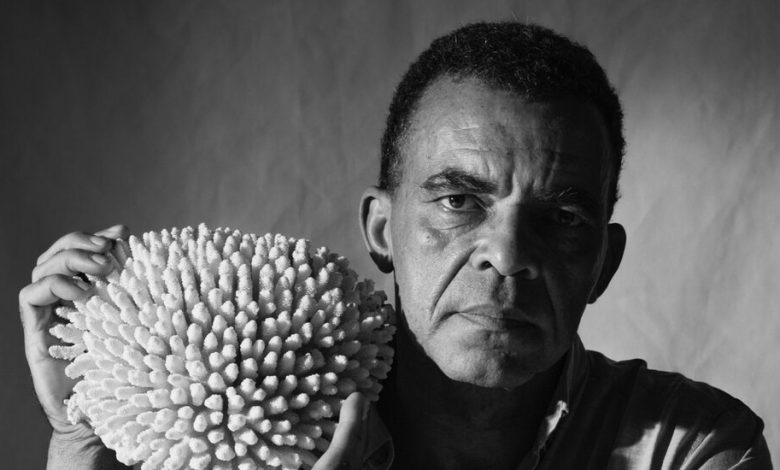The Scientists Watching Their Life’s Work Disappear

Amid the chaos of climate change, humans tend to focus on humans. But Earth is home to countless other species, including animals, plants and fungi. For centuries, we have been making it harder for them to exist by cutting down forests, plowing grasslands, building roads, damming rivers, draining wetlands and polluting. Now that wildlife is depleted and hemmed in, climate change has come crashing down. In 2016, scientists in Australia announced the loss of a rodent called the Bramble Caymelomys, one of the first known species driven to global extinction by climate change. Others are all but certain to follow. How many depends on how much we let the planet heat.
The seven scientists here document the impacts of global warming on the nonhuman world. Their work brings them face to face with realities that few of us see firsthand. Some are stubborn optimists. Some struggle with despair. To varying degrees, they all take comfort in nature’s resilience. But they know it goes only so far. These scientists are witnesses to an intricately connected world that we have pushed out of balance. Their faces show the weight they carry.

Kristin Laidre
Narwhals and Polar Bears
Laidre is an ecologist who specializes in arctic mammals, which are especially cornered by global warming.
The Arctic is warming much faster than the rest of the planet. I study animals that are inextricably tied to the sea ice, which is disappearing. Narwhals spend most of their time in deep water, in and under dense ice. They need cold water. The other species I study is polar bears. Everything about being a polar bear is tied to the ice. It’s how they move around. It’s how they find mates. It’s how they find food and eat. It’s how they get enough nutrition to successfully reproduce. It’s just their platform of life, basically.
I’m dedicated to this place, and I work hard to objectively understand it as a scientist. I also have made my peace with being able to personally mourn the damage I’m documenting.
I think a lot about the Indigenous communities I work with, who rely on these animals for subsistence. I feel anger and sadness for those communities. I think about the future a lot. I wonder what the future will be like for my young friends. But I try not to dwell on it. Because if I did, it would be pretty hard to do my daily work. Nature is beautiful and brings me joy. I try to focus on that.
Keith Parker
Salmon
Parker is a senior fisheries biologist for the Yurok Tribe in Northern California. Across the West, salmon stocks have been devastated by dams, water diverted for agriculture and climate change.
I grew up fishing on this river. I remember massive amounts of fish that used to come in, salmon in particular. It would be so noisy, you would actually hear it. They would leap into the air, splash and fin. Finning is when they break the surface with their dorsal fin. As they made their way upriver, it was amazing to see hundreds of salmon backs finning together.
We are known as salmon people, like all the tribes in the Klamath River Basin. Salmon and the Klamath River are the lifeblood of our culture and our community. Unfortunately, since the late ’90s, we’ve seen this gradual decline. The state and federal agencies closed the fishery this year, based on the low predicted returns. Our Yurok Tribal Council also closed our fishery for the year.
I think it was the right decision, but it’s devastating to our community to not be able to harvest salmon. I notice that when we have really good salmon runs, people are happy. And years like this, where we have a closed salmon fishery, we see increases in drinking, domestic violence and a lot of detrimental things.
The loss of the size of the run has hurt not only people, but Mother Earth. All those fish were breaking down and being absorbed into the forest. That’s how you get ocean nutrients in trees hundreds of miles upriver.
All the terrible things I’ve seen, all the detrimental changes to the environment, all the impacts of climate change — I use it to fuel my motivation to be a better scientist, to be a better human being, to be a better steward of the land. And honestly, part of it is anger. That’s fuel, OK? I get mad, and I turn that anger into fuel that motivates me.
Andrés Rivera
Mountain Glaciers
Since Rivera started studying glaciers in the 1980s, a series of globally monitored glaciers have gone from losing almost seven inches a year to losing almost three feet a year.
The first time I saw a glacier, I was 15. It was 1982, and I traveled to Western Patagonia. The trip was like an initiation. I felt overwhelmed by witnessing something so remote, wild and unknown to me. I was shocked by the force of nature. The contrast of colors was incredible, since the dense evergreen forest extends down to the ocean, with trees growing very near the blue and white glacier. I felt like at any moment a dinosaur was going to appear through the morning mist.
Then I saw a number painted at the margin separating the trees from the glacier: 1979. It was a mark painted by a scientist indicating the position of the glacier three years before. The glacier was retreating. It was my first clue that something was going on. Now the glacier is about three kilometers farther away than it was in 1982.
I’m a skeptic about the world’s capability to deal with the climate crisis. But I’m a professor, and with my students I try to be objective. I tell them what’s happening, that we are the cause. I say, Let’s work with what is feasible: trying to teach people to adapt, to use less water, to reduce pollution.
Hanna Mounce
Hawaiian Forest Birds
Mounce leads a team trying to save forest birds on Maui, where warmer weather is expanding the range of mosquitoes that transmit bird-killing avian malaria. Her main focus is a species called the kiwikiu. Only about 130 are left.
When we used to go into the forest, as soon as the helicopter would disappear, the forest was full of birdsong. You would hear kiwikiu when you woke up in the morning. You would hear them in the forest. It’s a trailing song, “chewy-chewy-chewy-chewy,” and it’s pretty loud. Now when we go out there, you might hike half a day before you encounter one of the birds.
Our office sits up above 3,000 feet. When I started working here, we didn’t have mosquitoes. And now they’re in our office every single day. The birds used to have refugia up in the higher elevations. We used to describe it as this invisible mosquito line around the forest, where it was too cold for mosquitoes. But that line is moving farther and farther up the mountain, and this disease is being transmitted all the way to the top of the mountain in some instances. We’ve run out of mountain.
To be honest, we cry a lot. At the end of 2019, I didn’t want to talk to anyone. I didn’t give a single presentation. We turned down every media request, because we could not give people any hope.
At least right now we have a tool that we’re pursuing. The easiest way to explain it is kind of like mosquito birth control. It’s not guaranteed that it’s going to work.
But what I told my staff is that if we lose kiwikiu, it’s not going to be for lack of trying. If we lose them, at least we’ll know that we did everything in our power.
Dee Boersma
Penguins
For 40 years, Boersma has studied a single colony of Magellanic penguins in Argentina’s coastal desert, documenting a decline of about 1 percent a year.
My study site is about halfway down the Argentine coast. When I first went there in 1982, I was overwhelmed with the number of penguins. It was just throbbing with penguins. It’s still throbbing with penguins, but it’s half of what it was.
Penguins nest in deserts because chicks don’t do well if they get wet. They haven’t grown any of their juvenile plumage, which is waterproof. We get more rain now than we did 40 years ago. After a rainstorm, you go to a nest, and both parents are away foraging for food. Often the chick is on its back with feet up in the air, totally wet. You can go from nest to nest, and they’re all dead.
Penguins die from heat strokes too. A couple of years ago, we had the hottest day we’ve ever recorded, 111 degrees in the shade. The best way for the penguins to get cool is to jump in the ocean, but some of them have to walk more than a kilometer to get there. We had 264 dead penguins just littered over the colony. Some were within five feet of the water, but they just couldn’t make it.
My view is that the penguins have a right to exist. I think we have too many people for the Earth’s resources. Overpopulation and overconsumption.
David Obura
Coral Reefs
Obura has been studying coral reefs since 1992. During that time, the world’s oceans have lost perhaps a quarter of their coral.
In 2000, I got the chance to go to the Phoenix Islands in Kiribati. The good reefs had 80 percent coral cover, really vibrant and colorful and bright. And the fish were incredible. There were highways of fish swimming up and down the reefs, sharks everywhere and dolphins. We thought, OK, these reefs are so far away from everybody, we can help protect them. And then there was a mass bleaching event in the Central Pacific.
By the time we could go back, a few years later, they had been completely hammered by warming. They were just decimated. The corals were all rubble and broken up by the waves. It was all brown with algae. Fish were still there, but not the same coral-dependent fish. It was so much more bland and drab. Of course, intellectually I knew that nowhere would be safe from heat stress and bleaching and climate change. But this was a place that had been safe so far from everything else. And yet it wasn’t immune. To me, that was a wake-up call.
I’m working really hard to point fingers at what we need to do. What’s driving the decline of coral reefs is carbon dioxide and fossil fuels and overconsumption. The consumption levels in the top 10 percent are so high and capture so much of the planet’s resources. Energy is not the primary thing; it’s just a facilitator. It facilitates this desire for consumption: for fashion, for burgers, for products. In real physical terms, we need to shift how we consume on the planet, because we have exceeded the limits.
Patrick Gonzalez
Trees in the Sahel
Gonzalez is a forest ecologist and climate-change scientist who studies tree deaths in the Sahel region of Africa.
In 1993, I was in a sparsely inhabited part of the Sahel, a savanna south of the Sahara. I stood at the foot of a tree called yir in Wolof, the local language. Normally yir has a moist green crown of leaves. But this tree was gray and lifeless under a beautiful blue sky. It had no ax marks or insect tracks or signs of disease. No signs of death by local human hands. And it was one in a stand of dead trees. Villagers told me that many trees like these had died.
Species that had fruits — fig, jujube — were the ones that died first, because those need more water. The thorny species were left.
The people consistently told me how much they missed a more verdant past. The death of trees has, by their own account, reduced people’s well-being both materially and emotionally.
Seeing those dead trees in Africa and the hardships of the local people motivates me to work even harder to take action on climate change, to cut my own emissions, to encourage others to live more sustainably.
I live a car-free life. I eat a plant-rich, meat-free diet, specifically to keep my carbon pollution low. Every kilogram of carbon you avoid helps.
Interviews have been edited and condensed.
Thea Traff is a New York-based photographer and photo editor who frequently contributes to The Times. Her portraiture focuses on the emotional complexity of human life through the use of dramatic lighting and sculptural poses.



